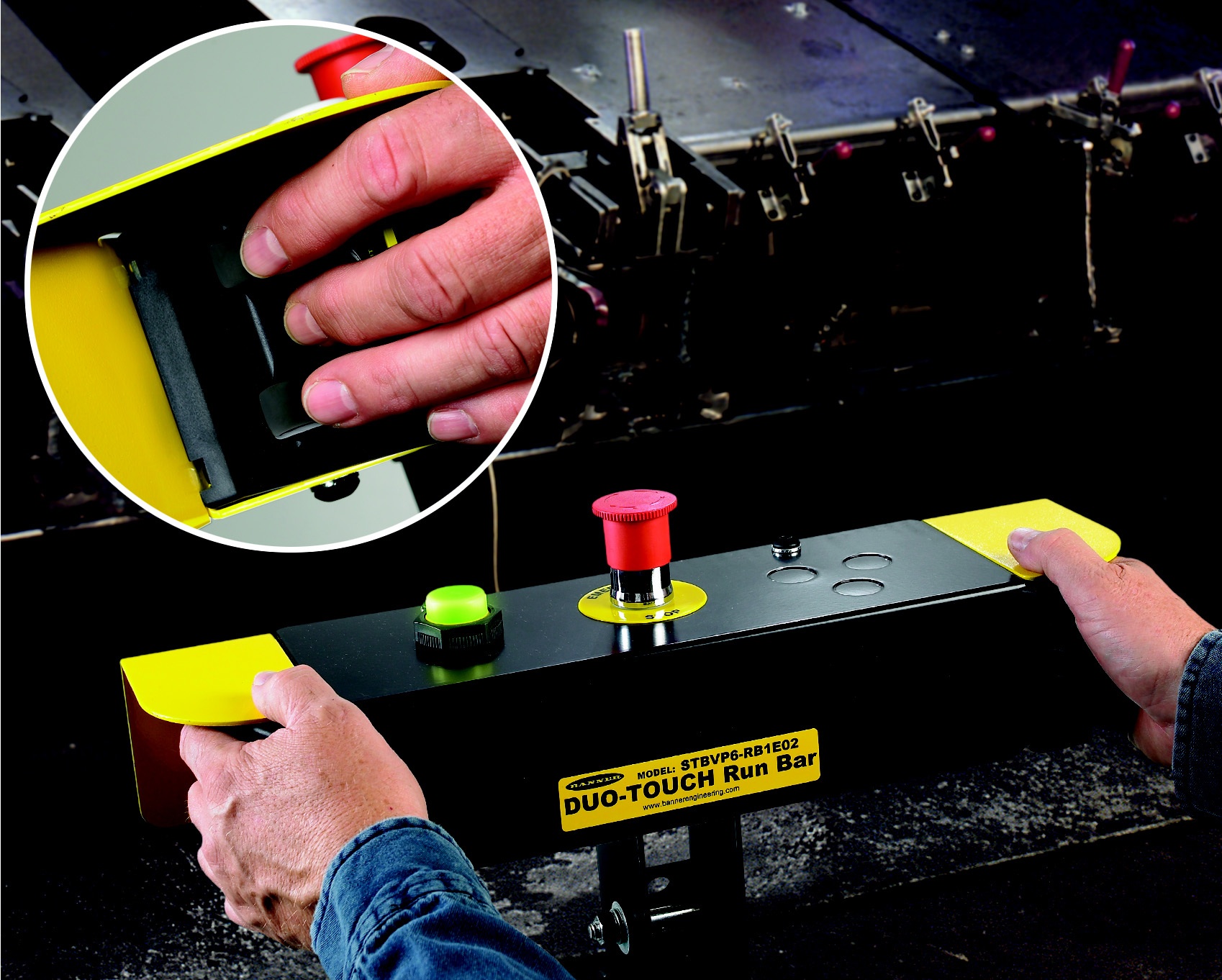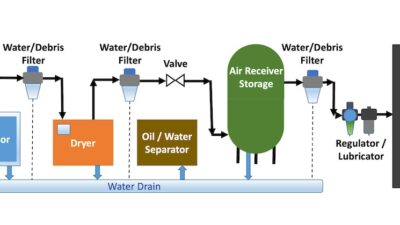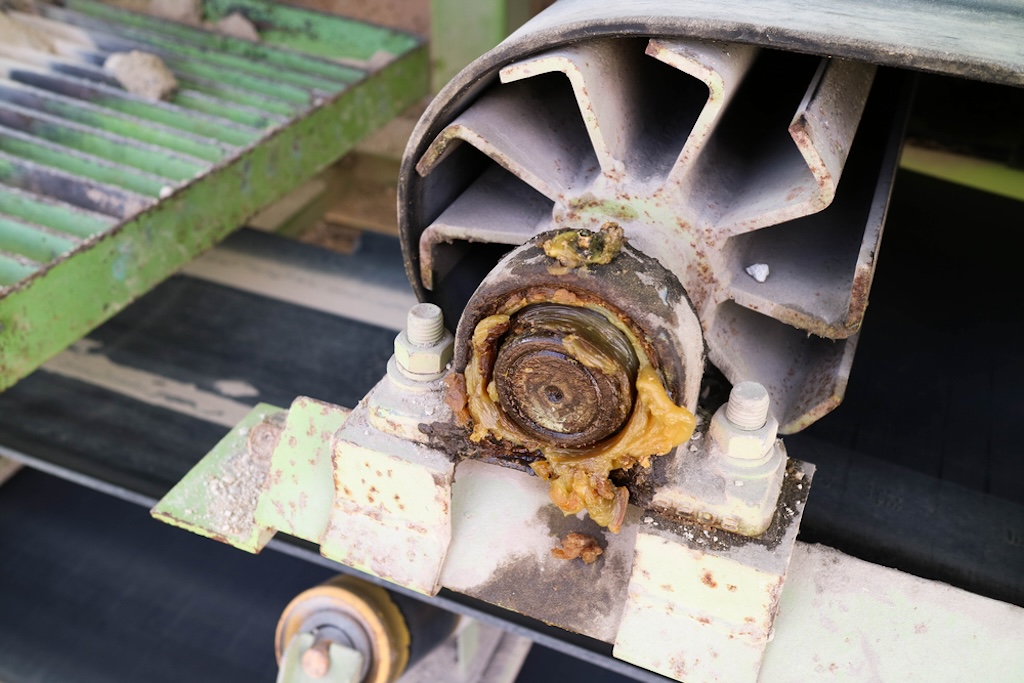Specific regulation regarding the ergonomics of machine design is somewhat lacking; many safety standards only go so far as to dictate that ergonomics must be taken into consideration. However, safeguarding equipment such as two-hand control and safety light curtains can be employed to promote ergonomics and relieve a degree of the stress placed on operators—and their employers as well.

Some machines, such as punch presses, pose obvious hazards to operators and surrounding personnel. Injuries related to poor ergonomics—those caused by repetitive machine actuation or heavy lifting, for instance—are less apparent and often overlooked. Yet poor ergonomics can lead to significant consequences, including:
· Lost labor due to injury
· Reduced worker morale
· Increased liability for employers; failure to comply with safety standards
Specific regulation regarding the ergonomics of machine design is somewhat lacking; many safety standards only go so far as to dictate that ergonomics must be taken into consideration. However, safeguarding equipment such as two-hand control and safety light curtains can be employed to promote ergonomics and relieve a degree of the stress placed on operators—and their employers as well.
Two-Hand Controls
A two-hand control system is comprised of two actuating buttons—activated within 500 ms of one another—that start the machine cycle. On machines with the capability of stopping mid-cycle, the release of one or both hands halts machine operation.
This arrangement provides a safeguarding solution with several benefits. First, it prevents an accidental start of the machine cycle. It also occupies both of the operator’s hands during machine operation while keeping the operator at a safe distance from the hazardous motion of the machine. In addition, two-hand control is typically a very economical safeguarding solution.
However, two-hand control can create ergonomic concerns. The actuating buttons must be installed such that one hand and/or one hand and elbow can not be used to initiate the machine cycle. This is typically achieved by physically separating the two buttons by more than 550 mm (21") in a single linear dimension; a distance that may prove uncomfortable to operators. By using physical barriers or mounting buttons on different surfaces, rather than in-line, users can reduce the separation to a more ergonomically friendly distance.
The actuating force of mechanical, spring-loaded palm/hand buttons can also cause ergonomic issues. In the past, these buttons have been constructed with spring pressures as high as 4.5 kg (10 lb) to be engaged. ANSI B11.TR1, a technical report on ergonomics, suggests that an engagement force of less than 2.25 kg (5 lb) will reduce the risk of stress injury, such as carpal tunnel syndrome.
Reducing actuating force even further, down to the force of just a touch, can maximize the ergonomic benefits of a properly installed two-hand control system. Light/no-force buttons – called touch buttons – use various sensing technologies, such as infrared light beams, to detect an individual’s hand or finger. While the sensing technologies can differ, all touch buttons must contain self-checking circuitry to prevent environmental influences or a failed component from causing the buttons to activate erroneously. These self-checking touch buttons will minimize physical stress while maintaining the same level of productivity (i.e., without reducing the duration of the sustained activation or the repetition frequency).
While the Two-Hand Control system can safeguard the operator, it offers little protection for others in the vicinity of the machine. This is a key factor that should be taken into consideration when selecting a safeguarding solution.
Safety light curtains
To protect the operator and others in the vicinity of the machine, an interlocked guard can be used to prevent access to the hazardous portion of the machine, contain ejected parts and material, and provide access by allowing the physical barrier to be moved. Unfortunately, interlocked hard guards can suffer from several pitfalls, including high maintenance, visibility issues (of the process), and poor ergonomics.
The ergonomic problems stem from the nature of being heavy, strenuous to move manually, and repetitious moving of the guard in applications requiring frequent access.
For applications in which many individuals must be safeguarded, the hazard or the process does not require containment, and the machine can be stopped quickly, a safety light curtain – also called a safety light screen – delivers a superior safeguarding solution.
A safety light curtain creates an invisible sensing field using infrared light beams, allowing the machine to operate only if there are no obstructions in this field. If one or more of the infrared beams is blocked by an opaque object, such as the operator’s hand, the light curtain detects this presence and signals the machine to stop. This design provides excellent ergonomics: interrupting the light curtain requires minimal or no physical effort, making the solution ideal for applications requiring frequent operator access and visual monitoring of the machine cycle.
Though the safeguarding function of a safety light curtain requires no physical effort, the location of the sensing field can create ergonomic problems. For a safety light screen to be an effective safeguard, it must be placed at a minimum distance (called a “safety” or a “separation” distance) from that hazard such that the machine has time to stop once a presence is detected. If this distance is too great, it can cause ergonomic concerns due to excessive reaching required as the operator places or removes parts during the manufacturing process.
Three steps can be taken to reduce this distance to a minimum: use a light curtain with a fast response time, ensure the safety system can detect an individual before they can progress too far into the sensing field, and decrease the duration of time required for the machine to stop. The first two steps depend on the model of the safety light curtain that is chosen. A state-of-the-art safety light curtain with a resolution (detection capability) of 14 mm (0.55") can be placed six inches closer to the hazard than an older system with 32 mm (1.25") resolution and slower response time.
The final step in reducing ergonomic issues related to excessive reaching is ensuring the machine can stop more quickly. The formula that is used to determine the placement of the sensing field uses a “hand speed constant” of 1600 mm/s (63 in/s). The response time of the safety light curtain, any interfacing devices, and the machine’s stopping time are multiplied by this factor. By properly interfacing the safety light screen, the amount of energy (e.g., electrical) that needs to be dissipated to remove the hazard can be reduced, and thus reduce the time.
As an example, if the safety contacts of a light curtain are placed in the emergency stop circuit, when someone interrupts the sensing field, “everything” drops out. It can take up to half a second (500 ms) or longer to accomplish the emergency stop because all the stored energy in relay coils, valve solenoids, and even the wiring has to be dissipated.
If the contacts are placed electrically “closer” to the actuator causing the hazardous condition, such as a clutch/brake, the stopping time can be cut in half or more.
In this example, the minimum safety distance can be reduced by almost 400 mm (16"). When these three factors are combined, users can save a significant amount of floor space and prevent ergonomic issues with safety light curtain installation.
Mike Carlson is safety products marketing manager for Banner Engineering



